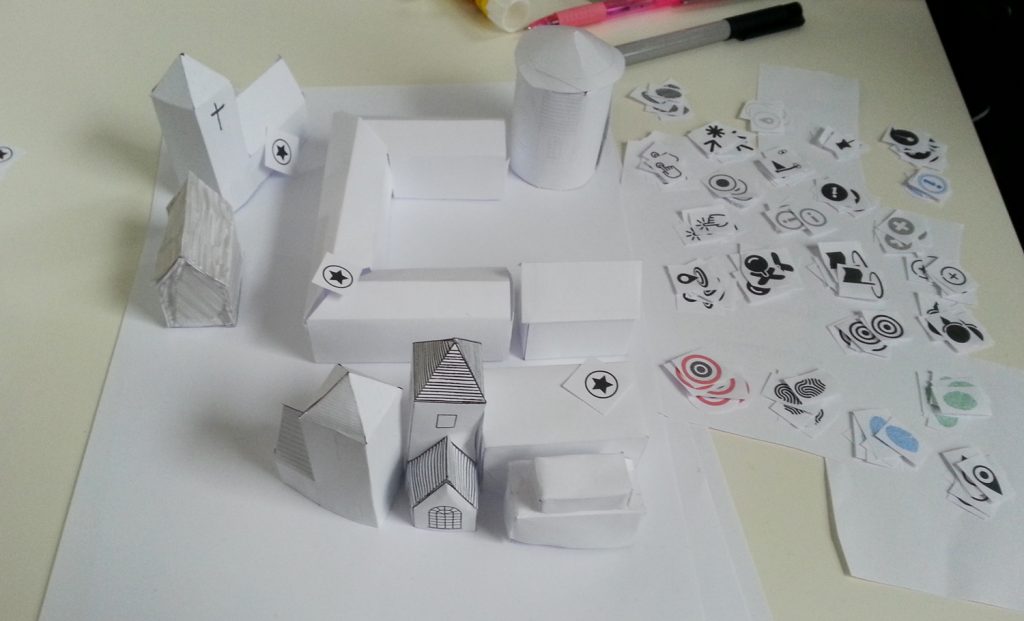The interdisciplinary research project ZEIT.RAUM Siegen is being carried out in close cooperation with citizens and aims to make the city of Siegen experience and understand its space and history in a collaborative way using innovative technology. ZEIT.RAUM is designed to facilitate collaboration and exchange between all interested parties – from academics and students to schoolchildren and amateur historians – about the city’s history, present and future. This opens up new forms of knowledge generation and transfer.
The project consists of two interlinked components: A touchable table-sized city model for interaction, produced using various digital fabrication processes and exhibited in the Siegerland Museum. Built-in sensors enable an interactive experience of the city and its history, which also stimulates individual memories. The second central element of the project is the Stadtwiki, a collaborative digital platform on Siegen’s city history, which is being developed by and for citizens. In addition to collecting information, it also serves as a forum to discuss the meaning of the data collected. Places of remembrance are identified, processed and reflected upon. All components of the project should be designed in such a way that they are easily accessible, understandable and easy to use for all interested parties.
 One of the first test prints for the interactive city model
One of the first test prints for the interactive city model
The role of the Fab Lab
We at Fab Lab are also involved in the project on several levels, especially in the creation of the interactive city model. The existing virtual 3D model of the city of Siegen, which was created by Prof. Jarosch, serves as the data basis for this. The topography is milled out of a large plate in the Lab. Which material is best suited for this is currently being tested. The true-to-the-original buildings of the city installed on it, on the other hand, are printed with the 3D printers in the Fab Lab. The sensor technology that will later be installed in the city model, which should be as user-friendly as possible, is also being developed in our lab. Several students are also involved in the project, working on individual components of the project within the framework of qualification theses.
 Paper prototype for the interaction concept of the city model
Paper prototype for the interaction concept of the city model
Current developments
Currently, students are working on the design of the interaction concept and have, among other things, created a paper prototype of the city model. Likewise, the first prototypes for the city model have already been successfully printed and the sensor technology extensively tested. The model is printed with conductive filament so that the sensors can later be built directly into the city model. As part of this initial technical work, a developer board (see cover picture) was also created on which the following were installed: Arduino-Leonardo, Raspberry Pi 2, CAP1188-Breakout, 3D-printed touch sensor and 3D-printed matrix.
 Test of the sensor technology to be installed in the city model
Test of the sensor technology to be installed in the city model
During one of our last project meetings, a first model of the Nikolaikirche – probably the best known landmark of the city of Siegen – was already printed. It took our Ultimaker a whole three hours to make the 1:9000 scale model.
Here you can see the result:
.
Other project partners
In addition to the Fab Lab, the University of Siegen also involves the Chair of Didactics of History headed by Prof. Dr. Bärbel Kuhn, the Chair of Practical Geodesy and Geoinformation headed by Prof. Dr. Monika Jarosch and the Chair of Computer Supported Group Work headed by Prof. Dr. Volkmar Pipek. The realisation was made possible by the support of the university and the Friends and Patrons of the Siegerlandmuseum, who see the project as an investment in the future of the Siegerlandmuseum. The Siegerland Museum is to be strengthened by ZEIT.RAUM in its role for cooperative and inclusive historical work in and with the region.
We will of course keep you informed about further developments of the project in and around the Lab.


